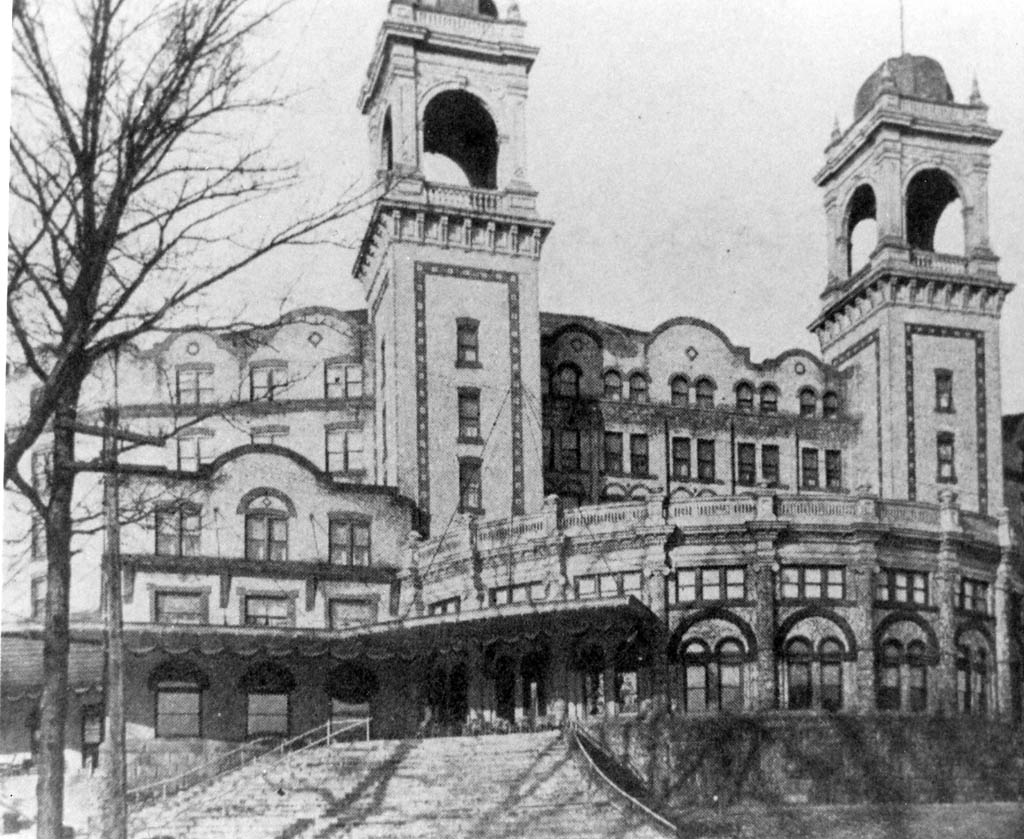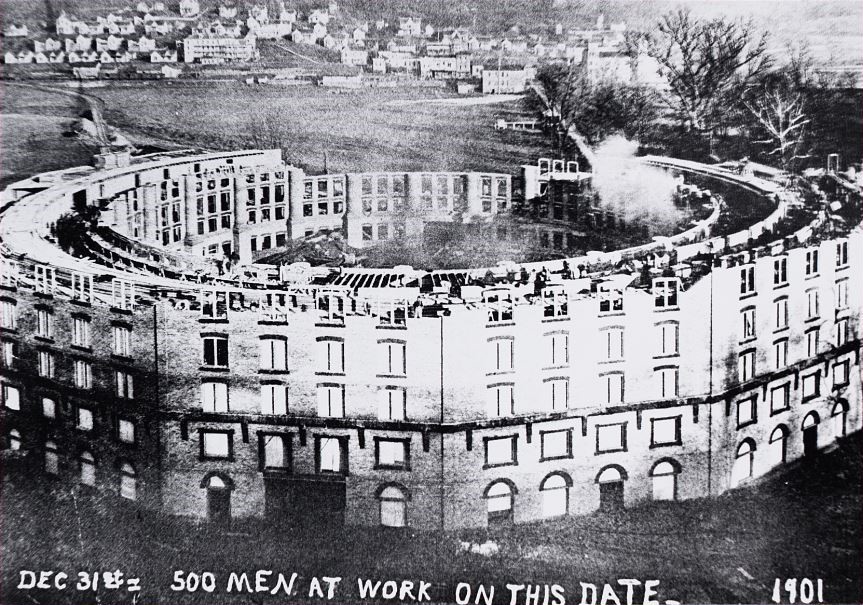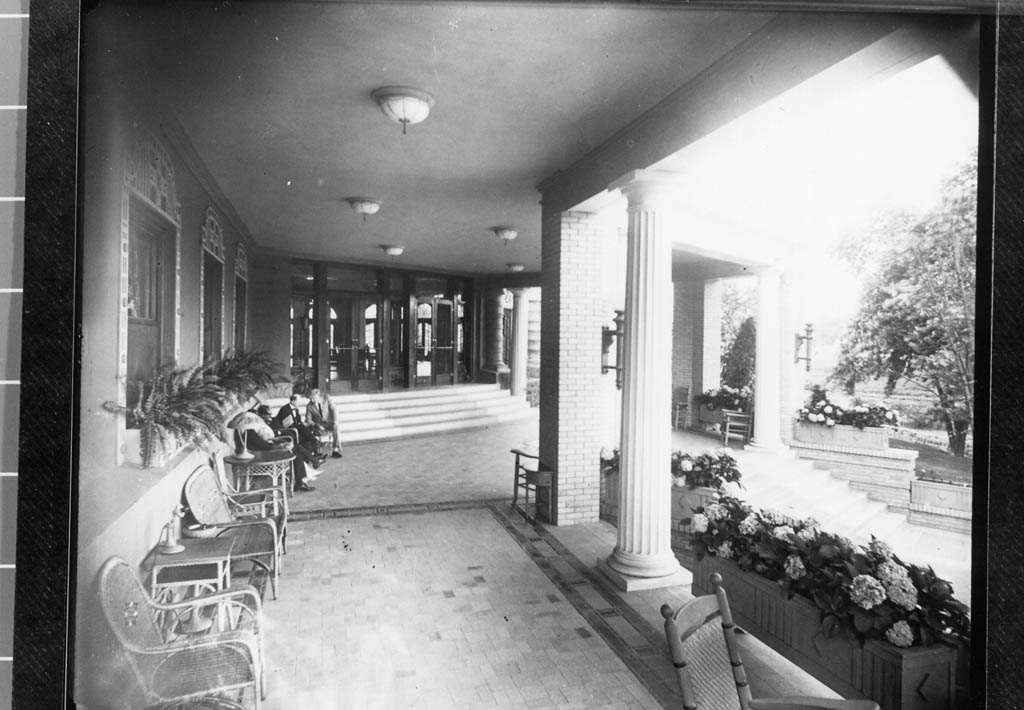A while back in our blog, we found out that it’d cost in the neighborhood of $150 million if you were to build West Baden Springs Hotel from the ground up today.
The numbers of what went into building it originally are just about as impressive.
What exactly went into the original design? Let’s just say that if you get aggravated by getting stopped by a train, you really wouldn’t been a fan of living here in 1901-02. About 1,275 train cars’ worth of raw materials went into construction of West Baden Springs Hotel back then.
That might not sound like a lot. But remember, these are full size train cars we’re talking about, not just your old Honda Accord. Reportedly, 450 cars of white brick were shuttled in to build the hotel. A trade journal at the time reported that 7.5 million bricks would be used to build the lavish new hotel.

Here’s the breakdown of the remaining materials, courtesy of James M. Vaughn’s book “The Dome In the Valley”:
• 242 cars of cinder
• 187 cars of sand
• 171 cars of gravel
• 62 cars of cement
• 51 cars of lumber
• 45 cars of steel
• 26 cars of lime
• 16 cars of red brick for trimming
• 13 cars of stone
• 12 cars of miscellaneous materials

This isn’t everything that went into building the hotel. Four tons of materials were used to paint the new hotel. 10,000 square feet of glass were used for the dome. Stone used to build the hotel’s foundation walls was actually quarried right here on site. Everything else was transported in via a railroad spur about one-third of a mile long that was built off the main Monon Railroad line. In the upper left corner of the photo above, you can see this railroad spur used to deliver materials to the construction site.

Some more astounding figures: Laborers worked 10-hour days and 6-day weeks during this rebuild, allowing the hotel to be rebuilt in just one year’s time after a devastating fire. Laborer wages ranged from 55 cents to $1 per day — the equivalent of $15 to $29 an hour in today’s dollars.
All of it is responsible for this beauty we are still enjoying as much as ever, 118 years later.